As a travel journalist, the most common question I am asked is, “What is the most interesting or surprising place you’ve ever been?” My answer is this story … and it’s definitely a destination worthy of the off the beaten path moniker. When I mention it, most have never heard of it. That in itself makes me smile.
I love history. All kinds of history. But anthropology and the human drive to leave a mark on this planet in our finite time here is singularly fascinating.
One of the planet’s most exceptional examples of historical architecture done in a painstakingly ingenious fashion is the ancient city of Petra. A sprawling stone wonderland that was literally carved from the red sandstone cliffs of southern Jordan nearly two thousand years ago. The Nabataeans built an imposing metropolis full of temples, tombs, altars and aqueducts … all as the epicenter of their trade route. An empire of frankincense, myrrh and spices. Petra is one of the new seven wonders of the world and should be visited without hesitation. Because our world runs on pop culture, Indiana Jones and the Last Crusade is the visual most of us have of its magnificent construction … and it’s fairly depicted … almost. My experience there was alluring. It was also crowded. The photos you see on Google fail to illustrate its popularity with tourists and modern-day traders of trinkets and textiles. Besides my memories, I have a lovely blanket I bought off a local Bedouin and a bracelet I overpaid for by at least double its value. The blanket still smells like desert warmed camel and strangely it’s not unappealing. According to current Instagram numbers Petra has been hashtagged over half a million times. Still go. Wind through the magnificent rock canyons, explore the city itself and climb the surrounding hills to visit Aaron’s tomb … the brother of Moses. Just be aware that you will be doing this with busloads of others while swatting away selfie sticks as you go.
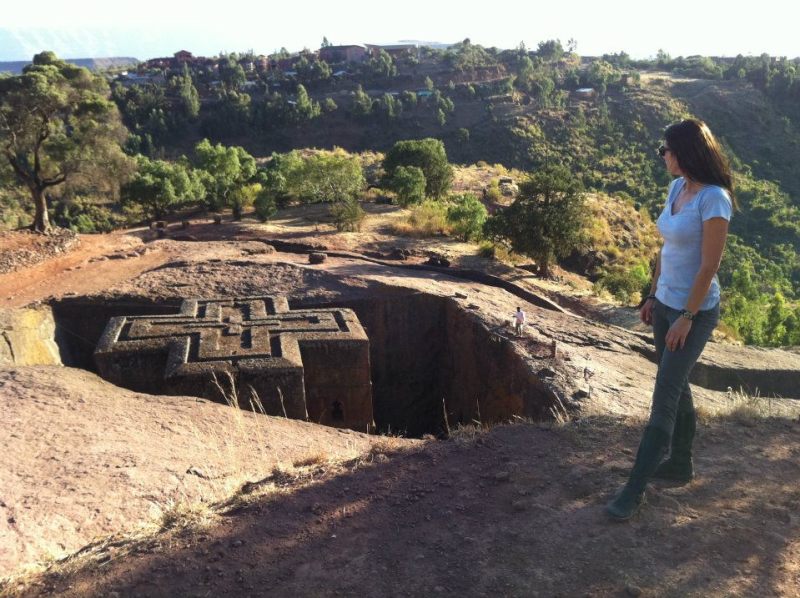
Africa will forever seem like one of the more exotic travel offerings at the all you can eat buffet of an adventurous life. Among the more alien, alluring, misunderstood and generally less visited spots is without a doubt Ethiopia. A land so rugged and desolate it makes you long for something very primal … a connection to the dusty earth itself. It is also home to a small town with some rather incredible history, Lalibela. A pilgrimage destination to 11 magnificent rock churches carved from volcanic rock almost a thousand years ago. Despite the extraordinary nature of its offerings its current Instagram popularity puts Lalibela at just over 25 thousand hashtags. Not much in the world of social media. This incredible place is my answer to the question that started this story. It’s my reference point for all things rather uncanny that supersede my expectations and preconceived notions in the best ways imaginable.

The history of the churches is both fascinating in its actual truth and imbued with supernatural lore. The medieval structures were commissioned by King Lalibela in the 12th century who envisioned Lalibela as a new Jerusalem for Christian pilgrims. Fearing that Jerusalem would be destroyed by Muslim invaders, he wanted to preserve it’s holiness and offer an alternative destination for those seeking a tangible connection to the divine. Almost a thousand years later the faithful still travel over rugged mountains, often barefoot, to make the journey that can take weeks. Legends give credit to angels working at night that helped the massive undertaking to be completed in just 23 years. The speed is remarkable considering the churches were built from the top down, sculpted inside and out like a Michelangelo masterpiece into a single slab of stone. Other legends point to the Knights Templar and their quest to find a secret resting place for the Ark of the Covenant. Lalibela is home to some of the oldest churches in the world…not the oldest per se because we stumbled upon what is likely to be THE oldest in a maximum security prison in Israel for a TV show called Legend Quest…the same project that ultimately led us to Lalibela seeking the resting place of the Ark and the lore that surrounds it. Yet to be in the mix of the origins of religious devotion is no small feat or claim to historical significance.
To this day, many churches in Ethiopia have a replica of the sacred Ark …. and supposedly one of them is the actual Biblical artifact. The chest into which Moses placed stone tablets inscribed with the Ten Commandments, as given to him on Mount Sinai. Very Indiana Jones and the Raiders of the Lost Ark … minus the bit about the Ark being buried in Egypt.
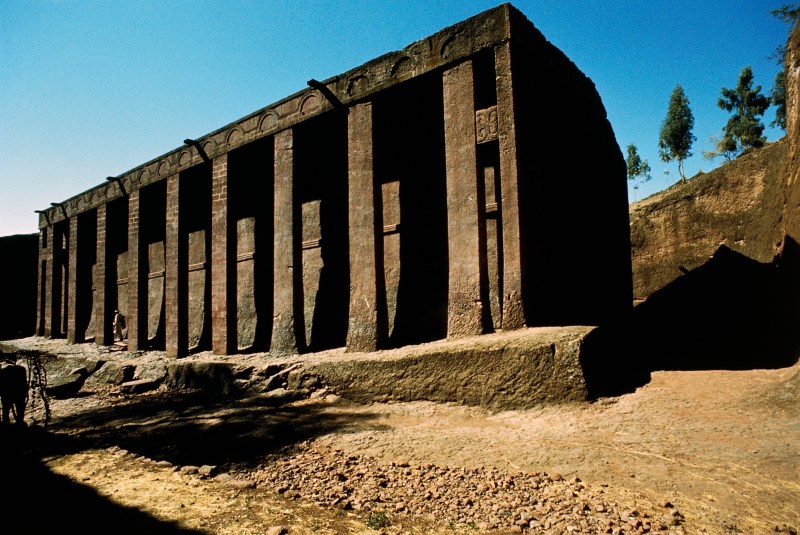
There is no lack of grandeur in this small dusty town. The church of Bete Medhane Alem is considered the largest monolith church in the world. The most iconic of the 11 rock-hewn structures is the cross-shaped Church of King George, and its breathtaking heritage lives on in the form of daily morning services, beautifully ornate displays of the Ethiopian Orthodox Church. A quite spot on a nearby hill for sunset, overlooking the church, is one of my favorite travel memories to date. The pungent scent of incense in the hot air, the sound of skin drums beating and the striking colorful robes and umbrellas parading through the tunnels, subterranean passageways and stone doorways give it all a feeling of otherworldly holy majesty in the midst of an earth-toned desert landscape surrounded by mud huts, albeit some with satellite dishes, creating the unexpected duality of multiple stops made in a time machine all mashed together into one place. It makes the head swim in a rather delightful overload of the senses. And make no mistake, your senses will be tantalized, overloaded and challenged…for better or worse. Sanitation is a sliding scale of proper hotel flushing toilets, holes in the ground designed for squatting…a healthy way of dealing with things actually, although a tad less comfortable for the Westerner unaccustomed to smiling at their neighbor while doing their business…to the basic outdoor facility. By facility, I mean the side of the road. My shoes did not make the return journey home with me.
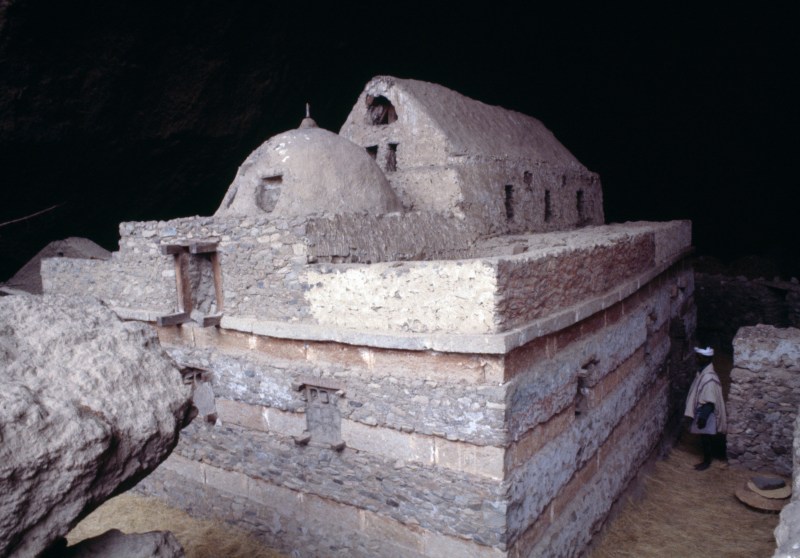
The churches have been a UNESCO World Heritage Site since 1978, and despite the difficulty of getting there, Lalibela is a destination truly worthy of the journey.
Unless long road trips on unreliable transportation are your thing, flying is the way to go. If you enter the country on Ethiopian airlines, you receive a discount on inter-country travel which is a deal considering flights can be expensive. Word on the street is that in-person visits to the airline counter often yield the best deals. Flights are generally reliable although we departed by small prop plane when the commercial airliner didn’t come in on time due to a political situation brewing…that sometimes happens in this part of the world. Our pilots were excellent and the plane was in good condition. Still, we couldn’t help make the joke that our situation could easily be an after-school special if it didn’t end well. Fortunately for us, it did.
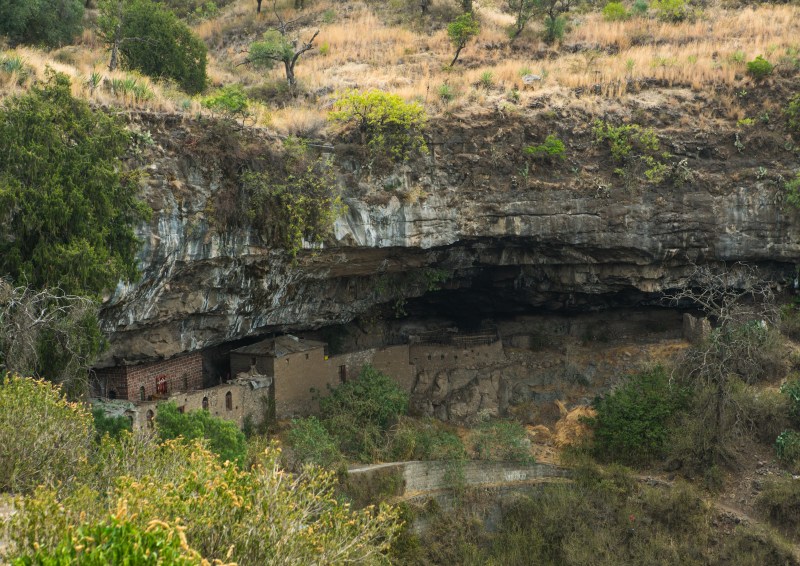
Your hotel options aren’t vast but there are some good ones. I realize that ‘good’ can be a subjective term in certain parts of the world, and I’m not personally particularly picky, but cleanliness is important and that was adequate. We stayed at the Mountain View property which was basic but nice and the sweeping views of the valley were breathtaking. A good note on travel to places where accommodations might be questionable is the purchase of a silk sleeping sack that keeps you off the bed sheets. It’s lightweight, small and a Godsend when you want a little distance from your mattress.
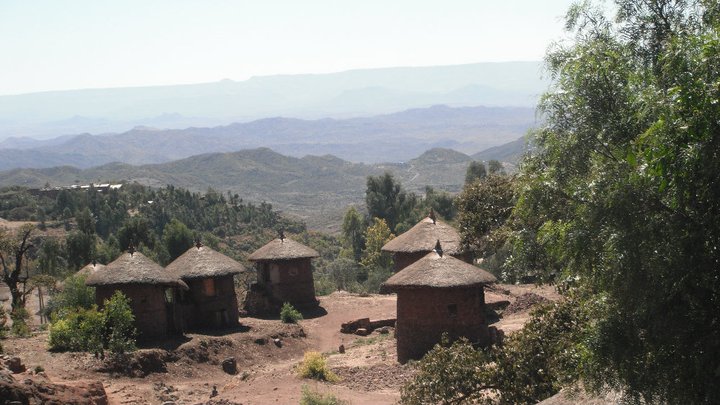
The other popular option is Sora Lodge, set on one of Lalibela’s steep ridges with equally magnificent views to make you swoon and pretend you’re Meryl Streep in Out of Africa… which was set nowhere near here but still a fantastic movie to envision in any windswept wilds of Africa. Sora Lodge has a quality restaurant and a garden where they grow many of their own vegetables. In Los Angles, we call that organic farm to table fare. In Ethiopia, they call that life. They also have wifi so Instagramming your trip shouldn’t be a serious problem. Understanding you’re still in a third world country and not demanding hotels resemble a more than two-star property is essential to realistic expectations and enjoyment of travel.
The hotels will help you arrange tours of the churches and hire a local guide, which is a great idea as they are valuable for logistics as well as a wealth of information about the area.
Dinner in Lalibela (Kinga Philipps)Ethiopian food is delicious if you can keep an open mind. It’s sometimes difficult to tell what exactly you’re eating since the majority of cuisine arrives as some form of vegetable or meat stew with a spongy sourdough flatbread called injera that serves as your main utensil. Visually it’s a pile of soupy, earthy colors swirled together on your plate and accented by grains of white rice. Sauces are thick and flavorful generally composed of lentils, beans or split peas. Meats are usually lamb or chicken. Most dishes are quite spicy so if that’s not your preference ask in advance. If you’re a texture person now is a good time to get over it. Every meal I had was finger-lickin’ good, literally, since there is really no escaping being bathed in your feast unless you are proficient with the injera, which I was not.
Ben Abeba is the most popular restaurant in Lalibela but strolling through town to see what’s being cooked in the open air bars and restaurants isn’t a bad idea either. A little more challenging for the digestive tract but fun to window shop if nothing else.
Like any other destination, the people are what make it truly special. Ethiopians are gentle, kind and quite funny. From their beautiful white robes that contrast so perfectly against the reddish desert soil to their soft and slow gestures…undoubtedly developed by years of existence in the hot summer months…the overall feeling of being in their presence is a sleepy comfort like being in the company of good friends.
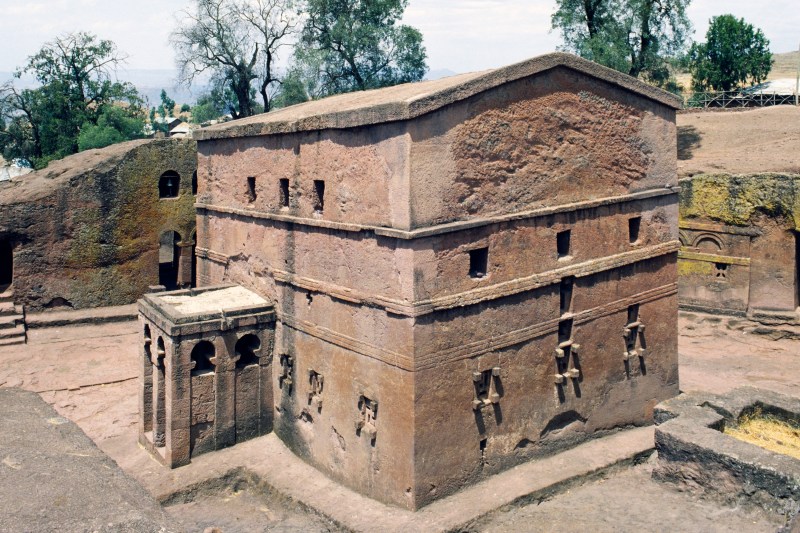
Kids are ubiquitous in the streets. They play games, sing, laugh, chase after strangers and engage you in conversation. They’re also smart little buggers. Panhandling is frowned upon so they’ve learned that if they dazzle you with their smiles, compliment you and give you gifts you will be so touched that you will either pay them for their generosity or offer something much more valuable in return. This is how I parted ways with my watch, but the experience still makes me smile. I was conned by a kid. All it takes apparently is to call a girl pretty.
Ethiopia wasn’t always a hot ticket travel destination. Ranked as one of the poorest countries in the world drought, famine, revolution and political instability kept tourists at bay for most of its history. For many, the only visual references of this majestic country are the National Geographic photos depicting starving children in the mid-1980s. Only recently did the government make a significant push into developing the tourism industry, improving infrastructure, marketing and promotion. A course that is already being felt. A steady flow of tourists has gone from a mere drip to a bonafide trickle. The floodgates are opening.
Despite the challenges, coming face to face with this kind of history is rare. Especially in a space that is still infinitely more authentic than it is commercial. “I feel small,” are the words that come to mind when you stand next to a 900-year-old church and listen to pilgrims quietly mutter words of prayer or take your breakfast on a terrace overlooking an ancient land.
The feeling of being part of something greater than the present moment in our timeline of life on earth is profound and resonates deep within.
This article was featured in the InsideHook newsletter. Sign up now.























